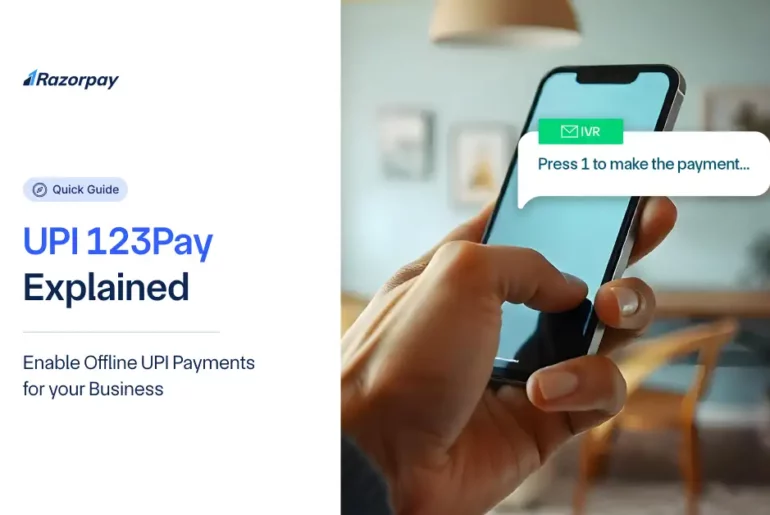Table of Contents
What is Contactless Payment?
Contactless payment is a touch-free payment method that allows customers to purchase an items without using cash or inserting their cards into the card reader. Instead, customers simply need to tap or wave their card (usually within 4 centimeters) over the reader to complete the transaction.
Contactless Payment Example
Contactless payments can be made using various methods, including credit or debit cards, mobile wallets, and smartphones or smartwatches with apps like Google Pay, Apple Pay, and Samsung Pay.
The following are some examples:
1. Contactless Credit or Debit Cards:
Customers can use their credit or debit cards for contactless payments. Simply tap, wave, or hover their card near the point-of-sale (POS) terminal to initiate the transaction. The card will then communicate payment information securely using radio frequency identification (RFID) or near-field communication (NFC) technology.
2. Smartphones or Watches:
Popular examples of contactless payment systems include Apple Pay, Google Pay, and Samsung Pay. These platforms allow you to pay by tapping your smartphone or smartwatch on a compatible payment terminal. They use NFC technology to transmit payment information securely.
Related Read: What are the Different Types of Payment Methods?
How does Contactless Payment Work?
Contactless cards communicate to the terminal using radio frequency identification (RFID) and near-field communication (NFC) technology. After that, the terminal connects to the customer’s bank account to process the payment quickly.
Here’s how it works:
1. Tokenisation Process
-
To initiate a contactless transaction, your card or phone must be close to the vendor’s contactless reader. This ensures that the right transaction is authorized.
-
Smartphones with digital payment apps like Apple Pay or Google Pay can securely store credit card information. These apps use tokenisation to replace actual card details with randomly generated tokens and transmit the information to the appropriate credit card network.
2. Security of Contactless Payments
-
Transaction sizes and security measures may vary between countries, adapting to regional differences in contactless payment adoption and fraud risks. This ensures a tailored approach to security. Contactless payments have transaction limits set by banks and card networks to minimize fraud risks. In India, contactless payments are capped at ₹5,000 per transaction.
-
From a security standpoint, contactless payments are more secure than traditional magnetic stripe cards since they generate new verification values for each transaction, making it difficult to clone cards.
3. Dynamic Authentication Technology
-
Contactless transactions utilize dynamic authentication technology that generates unique codes for each transaction. Unlike static codes on traditional chip cards, these codes cannot be duplicated or used for multiple transactions.
-
Smartphones further enhance security through features like biometric authentication (facial recognition or fingerprint) for initiating contactless payments.
Advantages of Contactless Payments
Contactless payments have revolutionized transactions by providing a faster and more convenient payment gateway for goods and services.
Here are some of its advantages:
1. Improved Checkout Speed
Contactless payments offer quicker transactions compared to standard credit card payments and cash. The transaction is completed within seconds with a simple tap or wave of a contactless payment card. This is particularly beneficial for micropayments and low-value purchases, as it eliminates the need to count cash or insert your card into a payment terminal.
2. Efficiency in Public Services
Contactless payment methods can enhance throughput in public transportation, parking garages, and road tolls. You can quickly tap your card or phone to pay for your fares without queueing at ticket counters or fumbling with cash. While the benefits of contactless payments might appear modest individually, their collective impact in reducing customer wait times is undeniable. Embracing this technology not only modernizes payment systems but also fosters a more efficient and customer-centric approach to service delivery.
3. Innovation in Frictionless Checkout
The growing acceptance of contactless payment technology has led to innovations in frictionless checkout. Non-traditional banking institutions and third-party payment providers are exploring ways to improve the checkout experience.
For example, GPS technology can locate nearby ATMs, ensuring convenient access to cash when needed. Additionally, geofenced campaigns enable businesses to offer personalized loyalty promotions based on your location.
Related Read: What is the difference between UPI and BHIM?
Disadvantages of Contactless Payments
Contactless payments are often hailed for their convenience and speed. Just a quick tap and you’re good to go. Yet, like any technology, there are some cons to consider:
-
There is a risk of unauthorized transactions if your card or device gets lost or stolen.
-
There may be compatibility issues with certain payment terminals or devices, limiting the availability of contactless payment options.
-
Some people may need clarification about their personal and financial information security when using contactless payment methods.
It is important to stay vigilant and take necessary precautions to protect yourself from potential risks associated with contactless transactions.
History of Contactless Payments
-
Contactless payment technology emerged in the early 2000s, allowing users to transact by tapping their cards or devices on a contactless-enabled terminal.
-
In 2007, the first contactless payment card was introduced in India. Adopting NFC technology further boosted contactless payments.
-
Contactless payments have become mainstream and are widely accepted across various sectors, such as retail, transportation, and hospitality. Examples of contactless payment systems include digital wallets like Paytm and Google Pay, as well as card-based solutions like Visa payWave and Mastercard PayPass.
Conclusion
Contactless payment is now a quick, secure, and simple way to pay for everyday purchases. From credit cards and smartphones to smartwatches, there are a variety of options to suit your needs. Simply tapping or waving your preferred device allows you to make transactions fast and easily, removing the need for cash or physically inserting your card. With its expanding popularity and ongoing innovation, contactless payment is primed to become an even more powerful force in the future of our wallets.
Frequently Asked Questions (FAQs)
1. Is contactless payment safe?
Contactless payment is considered secure. It uses advanced technologies like tokenisation and dynamic authentication to protect financial information during transactions.
2. What is contactless payment limit?
The contactless payment limit in India varies depending on the issuing bank or card provider. The Reserve Bank of India (RBI) has set the limit at ₹5,000 per transaction for contactless payments using cards. However, the limits may vary for mobile wallets or UPI-based contactless payments. You should check with your bank or card provider for specific limits.
3. What are the types of contactless payments?
There are various types of contactless payment methods available in India. These include contactless cards, mobile wallets such as Paytm and PhonePe, Unified Payments Interface (UPI) apps like Google Pay and BHIM, and NFC-enabled devices.
4. How is contactless payment used?
Contactless payment can be used by simply tapping or waving the card or device near a contactless-enabled terminal. The transaction is processed wirelessly through NFC technology, which allows secure communication between the card/device and the terminal.
5. What is the disadvantage of contactless payment?
One potential disadvantage of contactless payment is the risk of unauthorized transactions if your card or device gets lost or stolen. While most systems have security measures, keeping track of your cards/devices and reporting any loss immediately to minimize risks is important.
6. How can I verify if my card is enabled for contactless payments?
There are two main ways to check if your card is enabled for contactless payments:
1. Visually inspect your card: Look for the contactless symbol on the front or back of your card. It usually resembles a radio wave symbol with four curved lines radiating outwards. If your card has this symbol, it’s likely enabled for contactless payments.
2. Contact your bank: They can confirm whether your card is enabled for contactless payments. You can usually check your bank’s website, mobile app, or call customer service to inquire.
7. How do I activate contactless payment on my cards?
To activate contactless payment on your card, you can follow these steps:
-
Contact your bank or card provider to check if your card is contactless-enabled.
-
If it is, ensure the contactless feature is activated on your account.
-
Once activated, you can use contactless payment by tapping or waving your card near a contactless-enabled terminal.



